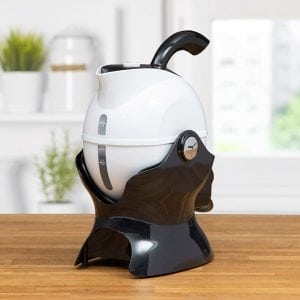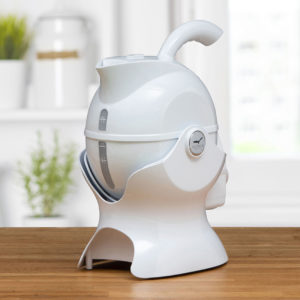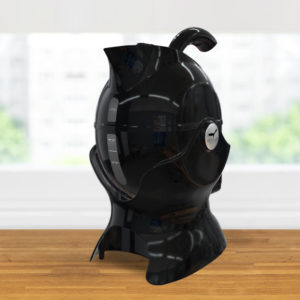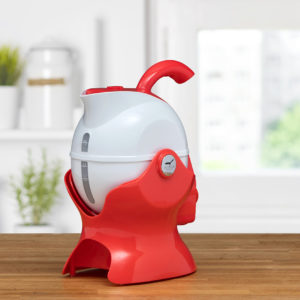The festive season is more than carols, lights, and increased footfall – it’s a pivotal window for building long-term customer relationships, especially in mobility and daily-living retail. For many families, a thoughtful daily living aid can become the gift that keeps giving well past December 25th, that makes preparation essential – not just to survive the rush, but to make this season your best yet.
Below are practical, timely steps your retail team can take now to maximise the upside – and mitigate stress – through the busiest months of the year.
Forecast Demand with Purpose, Not Guesswork
It’s temping to carry forward last year’s top-selling items – but consumer sentiment, and benefit pressures shift demand. In 2025, rising living costs have disproportionately affected those living with a disability and those with additional care needs.
Segment by gift vs. need: Differentiate between items people buy as ”gifts” (Under £50, easy to transport, emotionally meaningful) and ”essentials” (mobility aids, daily living, equipment).
- Use data smartly: Look at sales trends from October and November – not just December – across all of your stores. Identify which small aids (e.g. jar openers, reachers, non-slip mats) are showing early upticks, and build buffer stock accordingly.
- Consult carers and family caregivers: Remember there are 5.8 million unpaid carers in the UK. Their shopping behaviour often leads decisions in daily living categories.
Create Gift-Friendly, Story-Led Bundles
Mobility aids don’t feel ‘’Christmasy’’ at first glance – but they can be re-framed.
- Bundle a ‘’comfort package’’: Pair a grab rail or non-slip bath mat with a festive gift (robe, blanket, warm slippers) to give the shopper confidence and emotional framing (”helping mum stay safe this winter”).
- Use story tags: Add short product labels with use stories (”Great for helping with those early-mornings when joints are sore” or ”Ideal for the those who value their independence”) to encourage emotional connection.
- Keep price tiers in mind: Include entry-level, mid-tier, and premiums in your displays so shoppers can pick based on gift budget. The average order value on Cyber Monday hit £131.95 in recent UK data – people are willing to spend.
Design Displays That Demand a Moment
During the rush, shoppers don’t linger. You need displays that cue curiosity and relevance in seconds.
- ”Pause zones”: Use floor decals or shelf tags reading ”Did you know…?” to invite a second look. E.g. ”Did you know there is no lifting when using this kettle?”
- Fixture hierarchy: Place small, gift-friendly daily aids at eye level and hand level. Reserve floor space for bulkier mobility items.
- Themed zones: Dedicate a corner labelled ”Comfort & Independence” or ”Practical Gifts That Last” to immediately signal daily-aid relevance without needing a full ”mobility area”.
Staff Up & Train With Empathy
This is not just a seasonal surge – many shoppers in daily living categories are emotional, cautious, or under pressure.
- Role-play common concerns: Especially around safety, dignity, and return policy. Give staff quick scripts and FAQs (”How do I know it’s the right size?”, ”Can I return it if it doesn’t fit?”)
- Make ”gift ability” part of training: Teach staff to frame daily living aids as meaningful gifts (”This can really help your loved one feel more confident on their own”).
- Plan shifts wisely: Use your busiest periods (weekend afternoons, early evenings) to double up staff for demos and advice.
Customer Communications That Educate & Inspire
Even before customers step foot in store, your messaging can set expectations and prime interest.
- Teaser content: Use your November mailer or social posts with headlines like, ”Gifts they use every day: making thoughtfulness count”.
- Cut-off dates & urgency messaging: As December closes in, use reminders like ”Order by 15th December for Christmas delivery” to reduce last-minute anxiety.
- Gift guides: Create a short ”Daily-Aid Gifts Pack” guide (either printed or digital) that gives direction for different budgets and users.
Prioritise Aftercare & Trust in Returns
Many daily living purchases are tactile – users may wan to try them, return them, or exchange sizes. How you handle this post-purchase experience can make or break long-term loyalty.
- Flexible returns: Offer longer return windows (if you can) or ”Try at Home” periods (on relevant products) for daily living aids, particularly in the Christmas window.
- Demonstration support: In your receipt or package include a mini how-to card or QR video link for adjustments, setup, or care.
- Repair & spare parts access: Highlight that you can supply replacements pads, batteries, or components (or at least tell them where to get them if you can’t) – which reinforces your role as a trusted partner, not just a seller.
After Christmas: Turn Surplus into Opportunity
Even if some stock remains post-December, you can use it to build momentum into January and beyond.
- ”New Year, New Ease” campaigns: Position daily living aids as supportive or resolutions (e.g. ”make life easier in 2026”).
- Bundle leftover gifts as add-ons: If you have spare accessories, combine then with mobility products o increase average order value.
- Learn & refine: After the rush, collect feedback from staff and customers about which products surprised them, which were returned most, and what messaging resonated – feed that back into your Q1 planning.
Christmas is often framed as a sprint – but in mobility and daily living retail, it’s also a strategic bridge. The choices shoppers make now, especially in selecting helpful, meaningful items, can turn one-time gift buyers into long-term customers.
By combining thoughtful display, empathetic training, and emotionally framed messaging, you’ll not only meet demand – you’ll elevate your store as the go-to place for genuine, useful gifting.













Leave a Comment